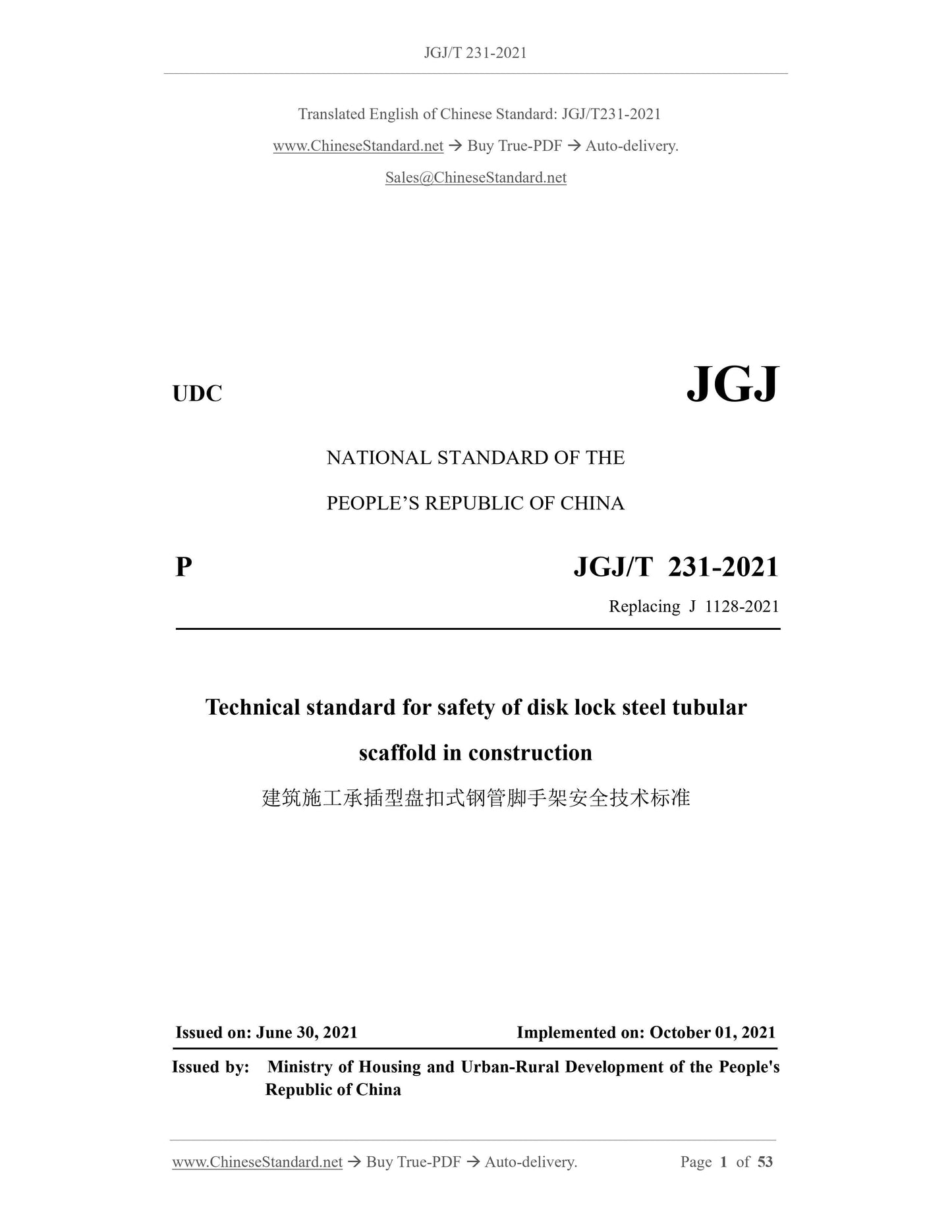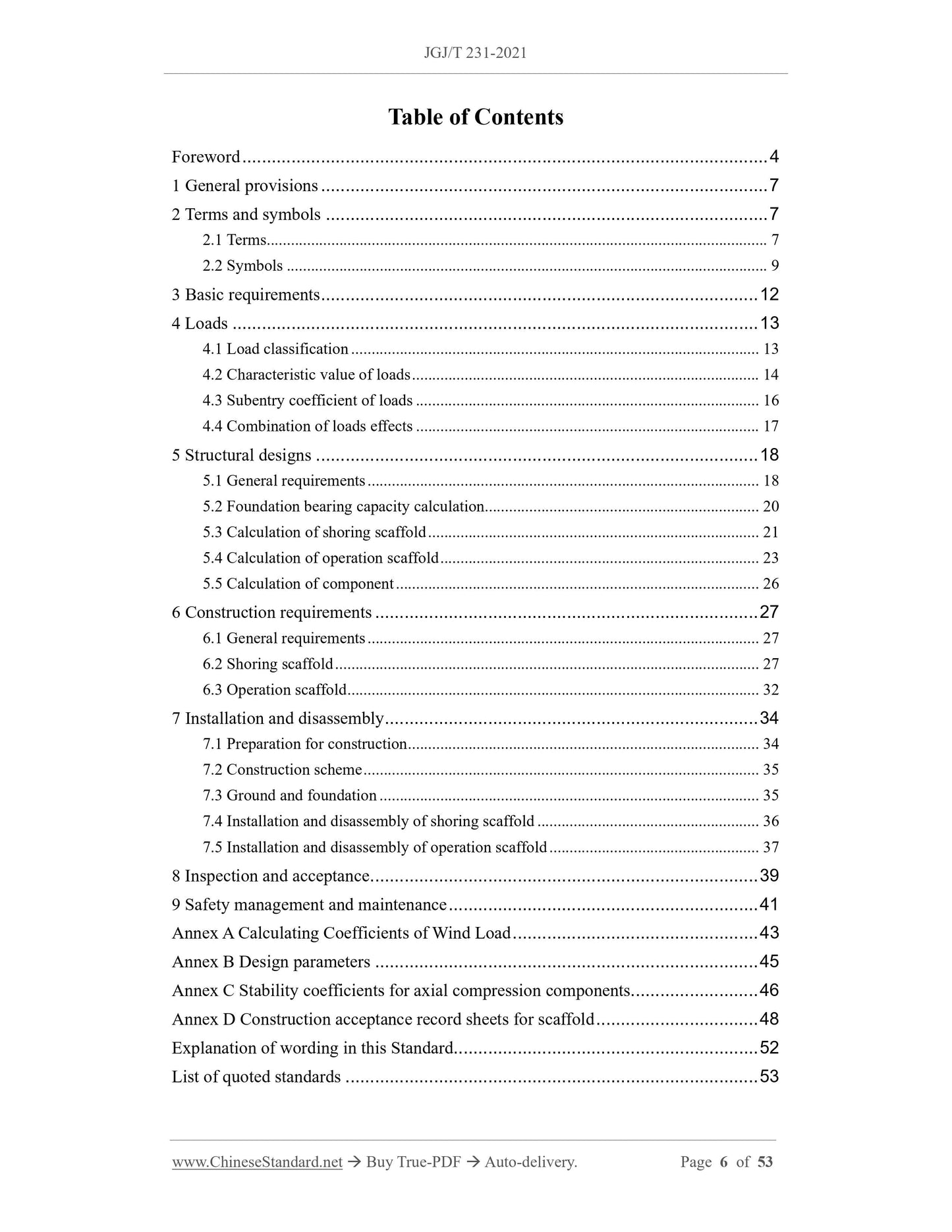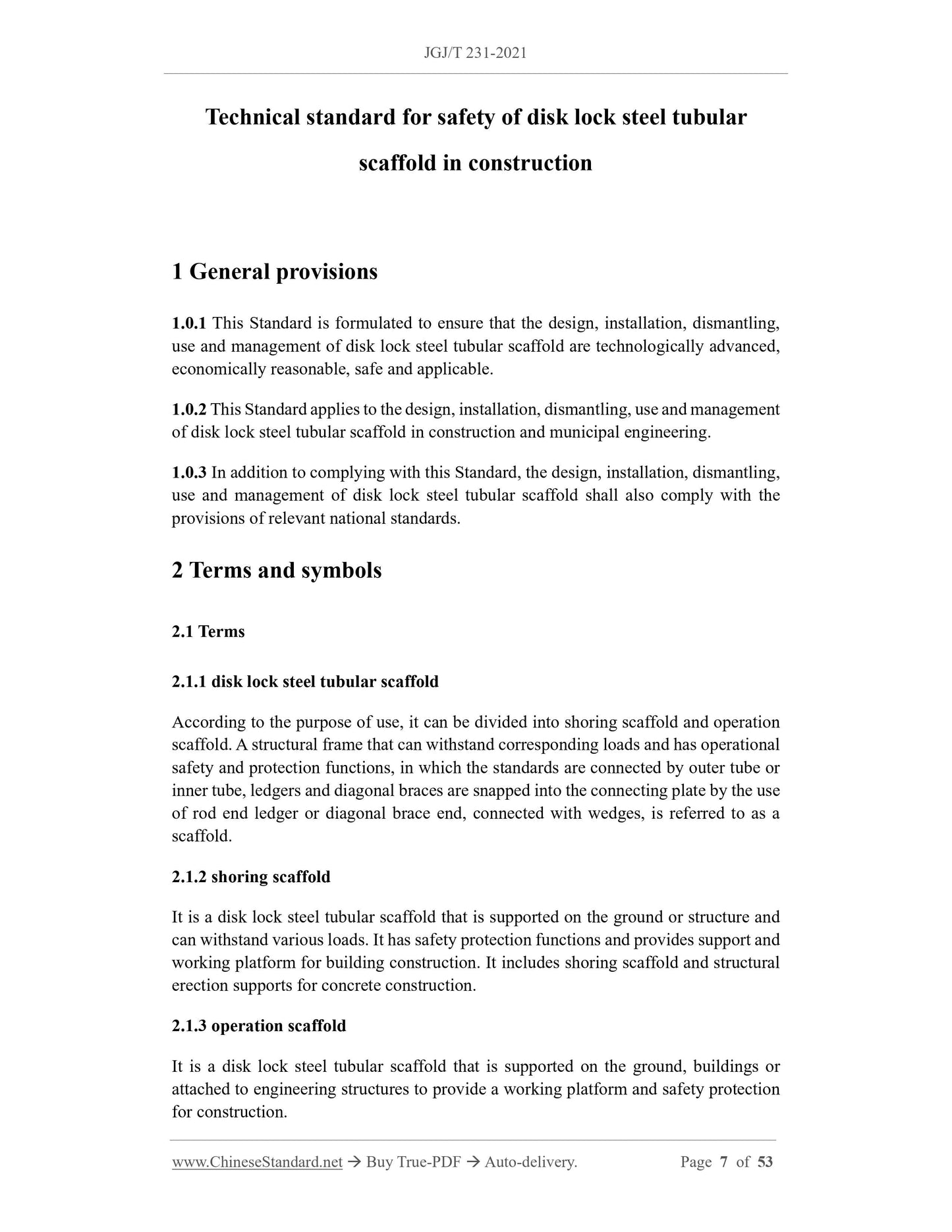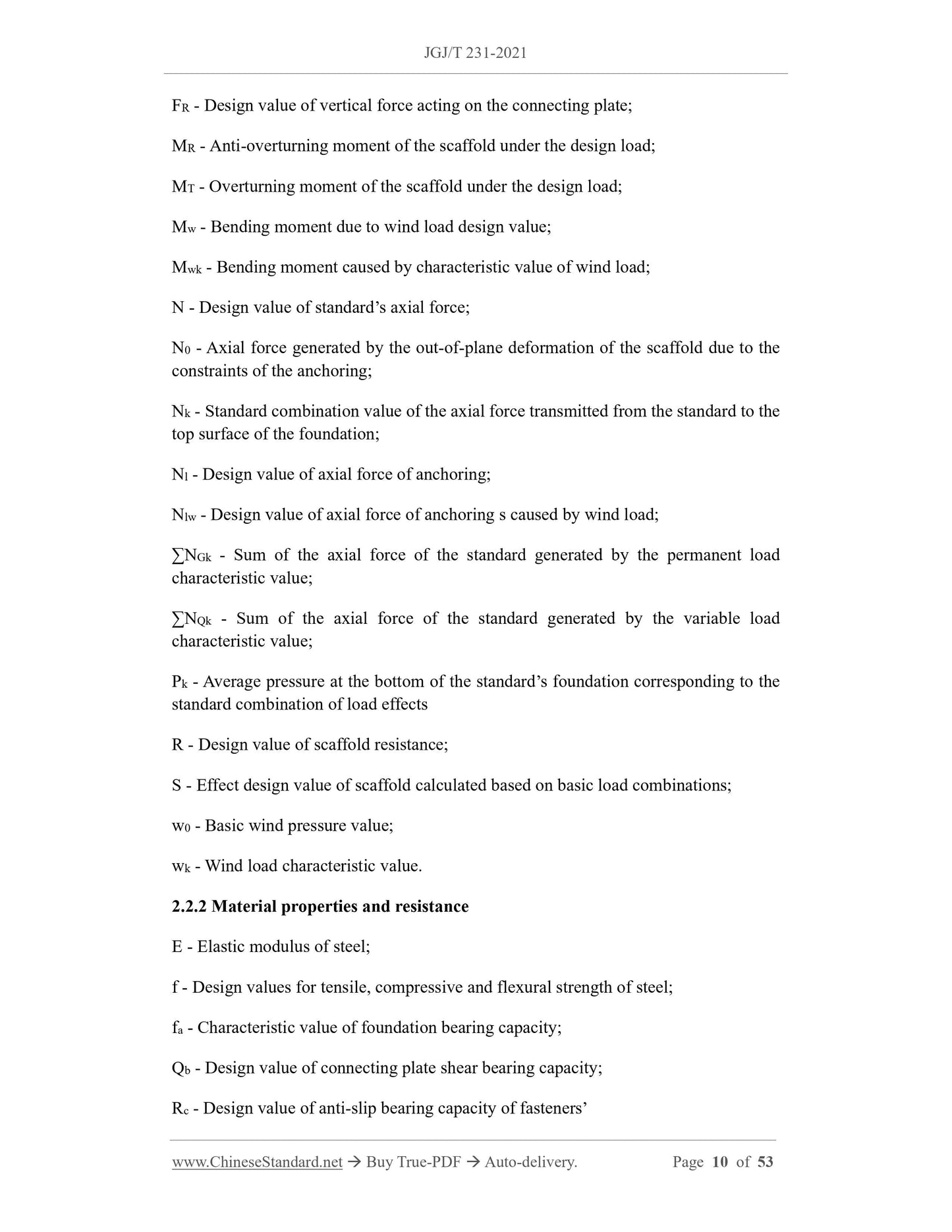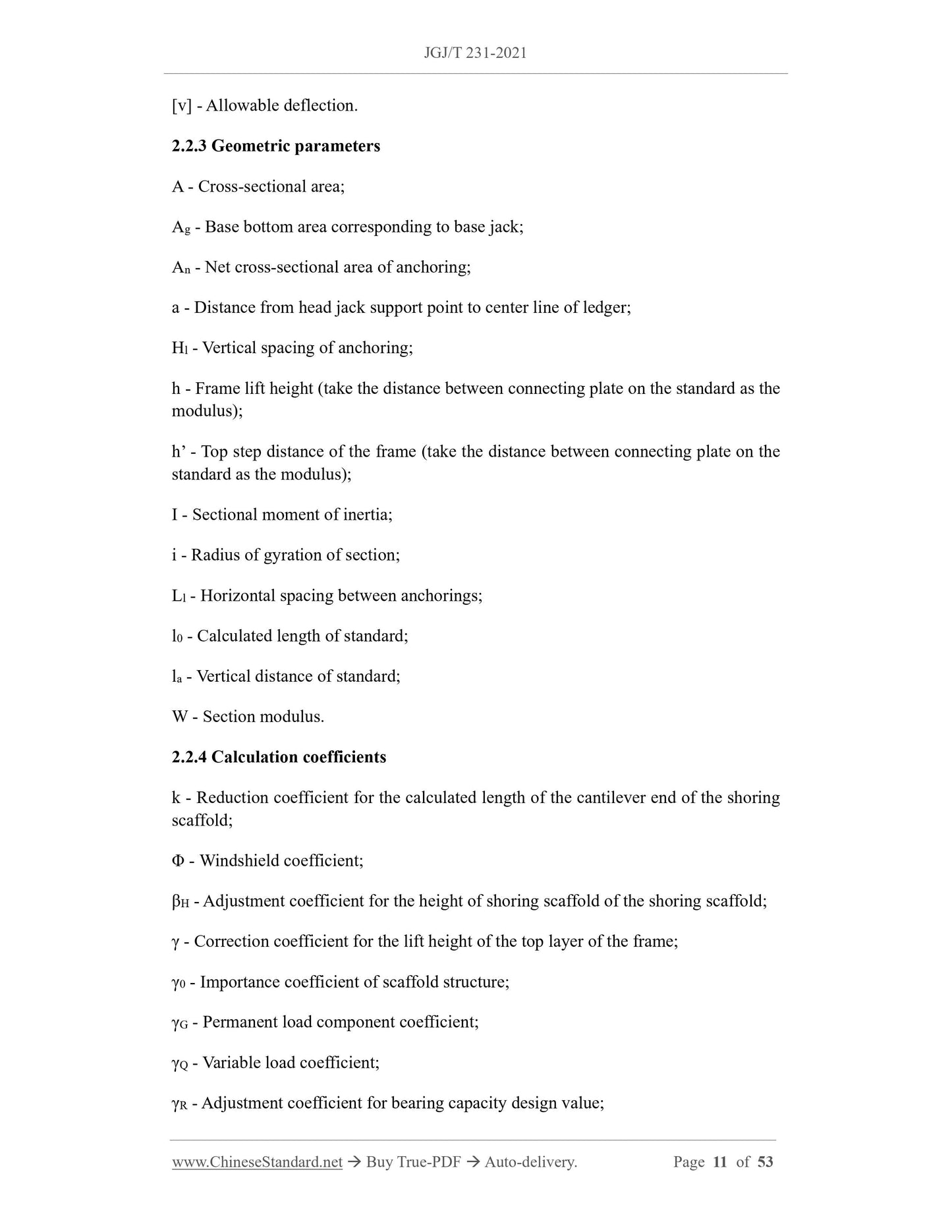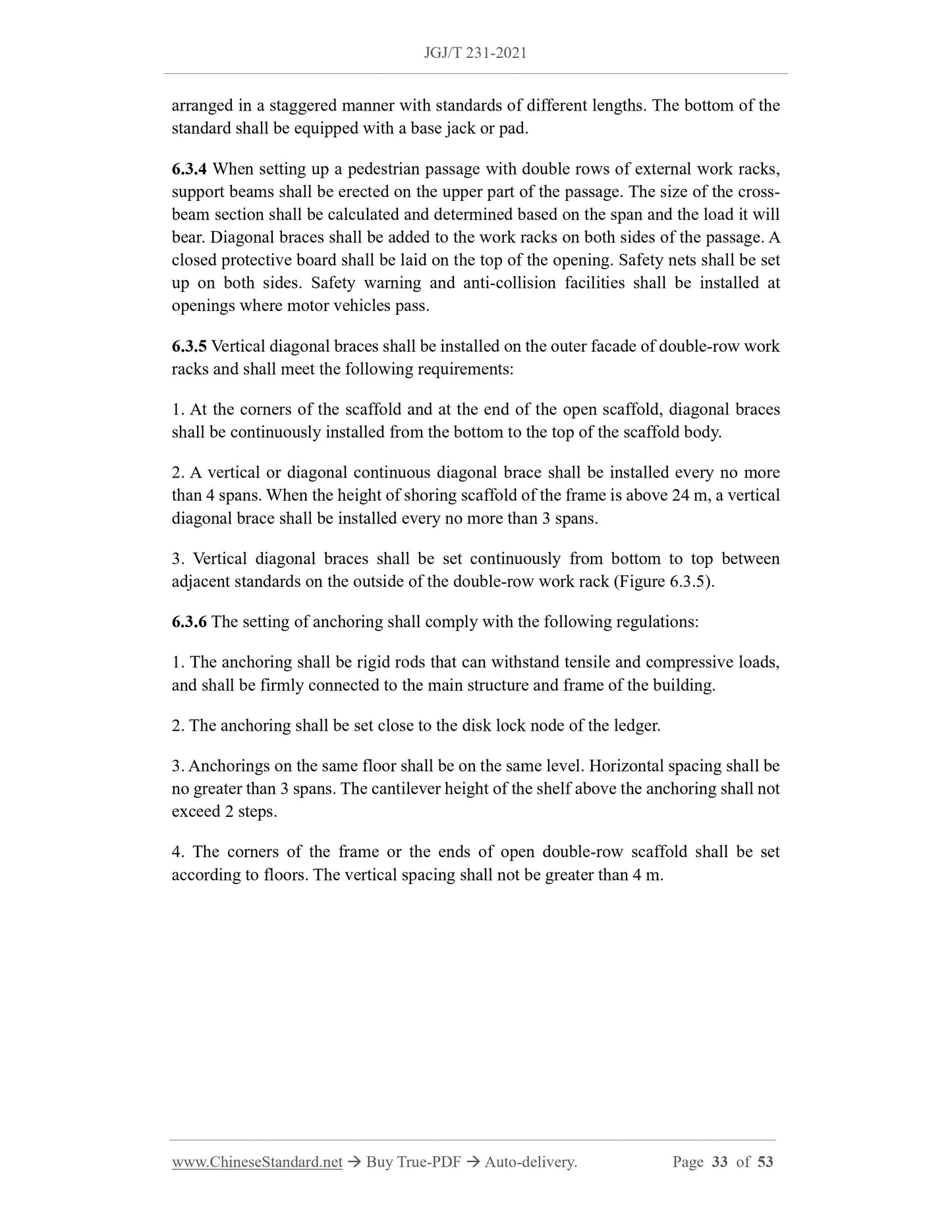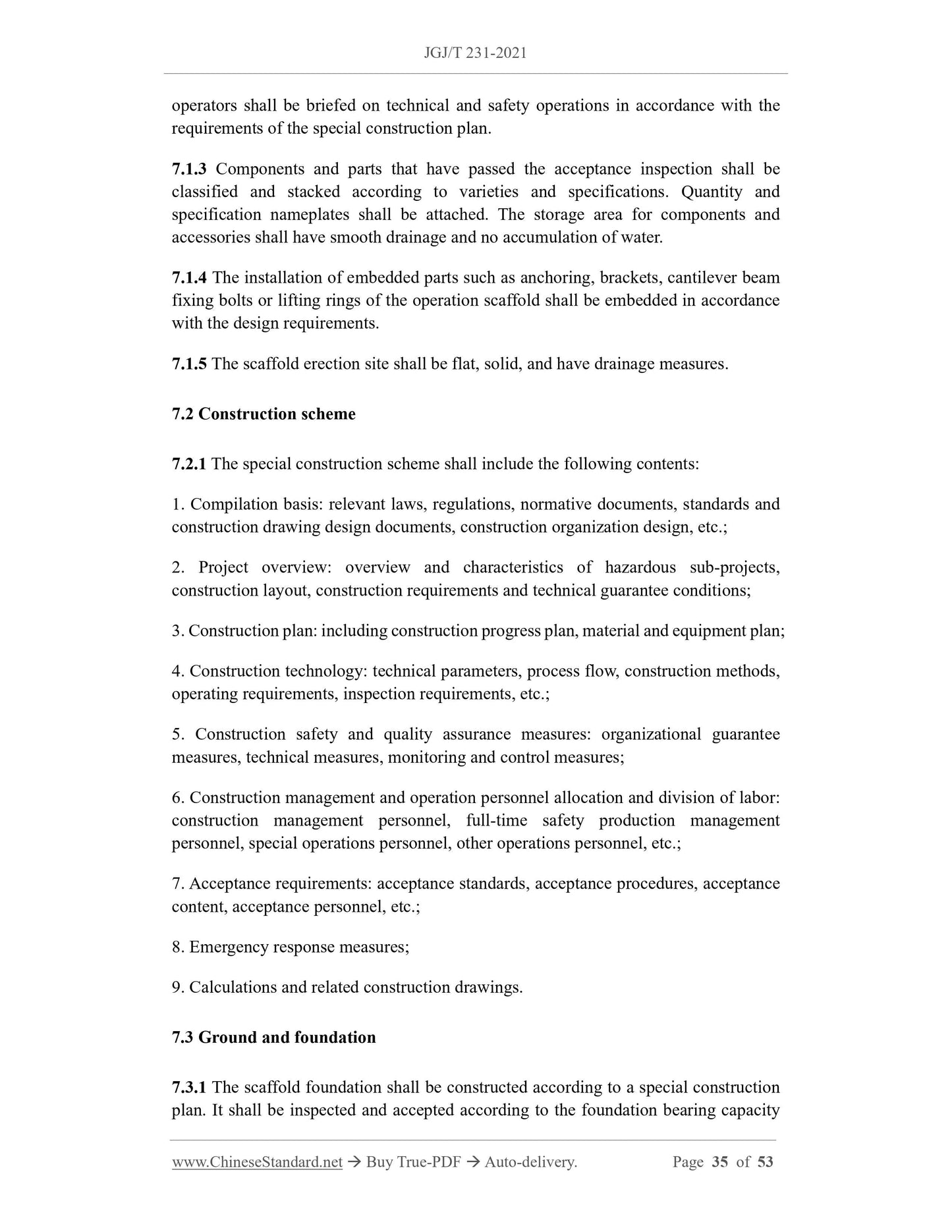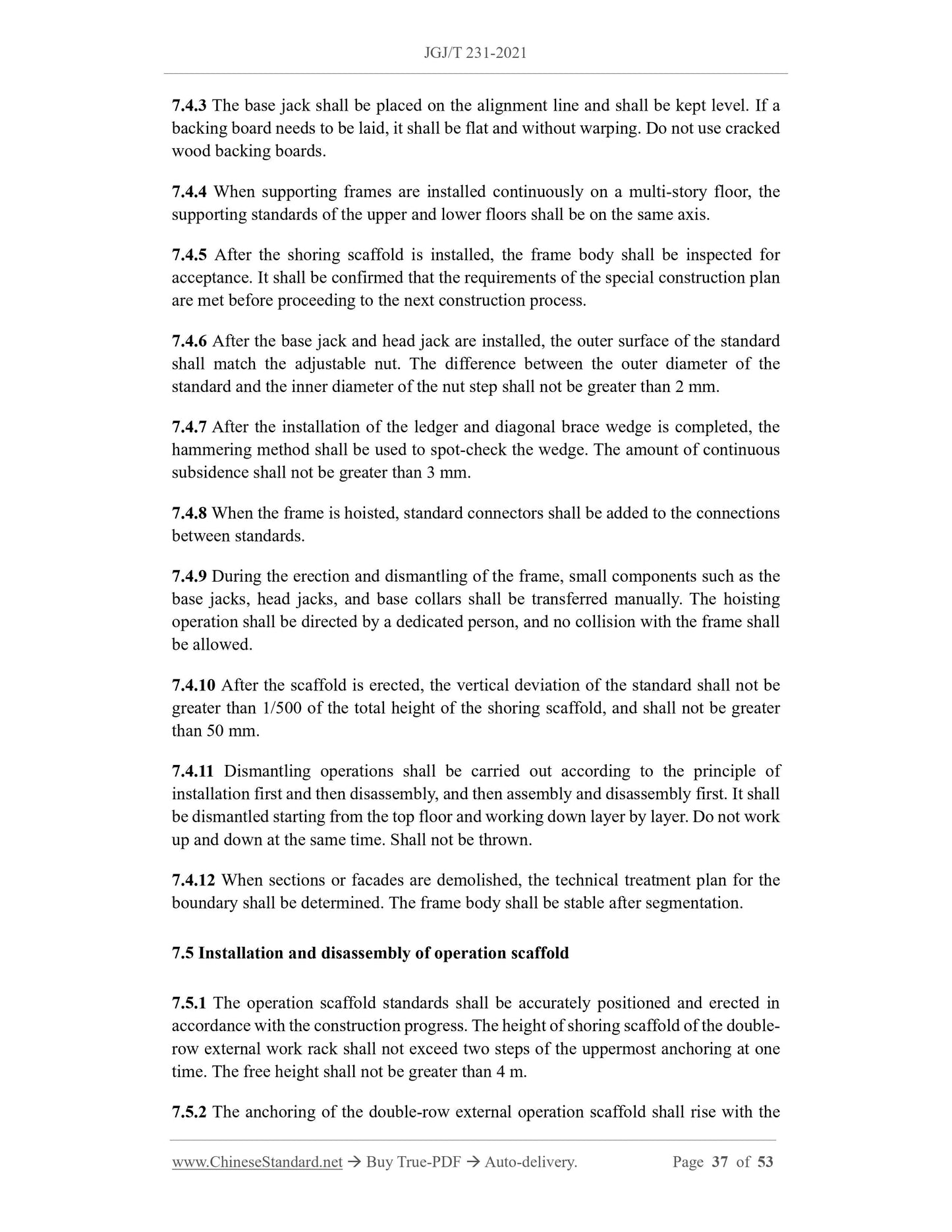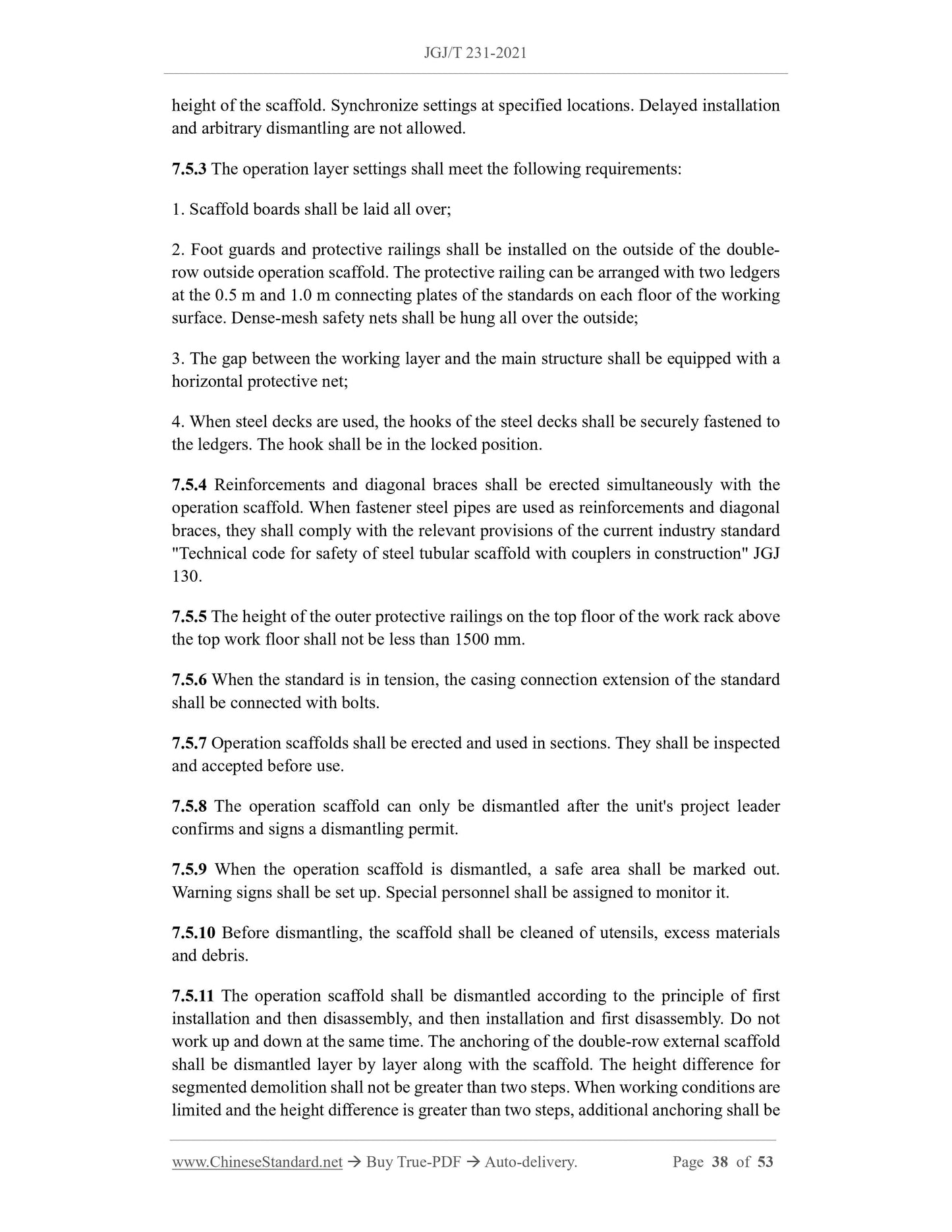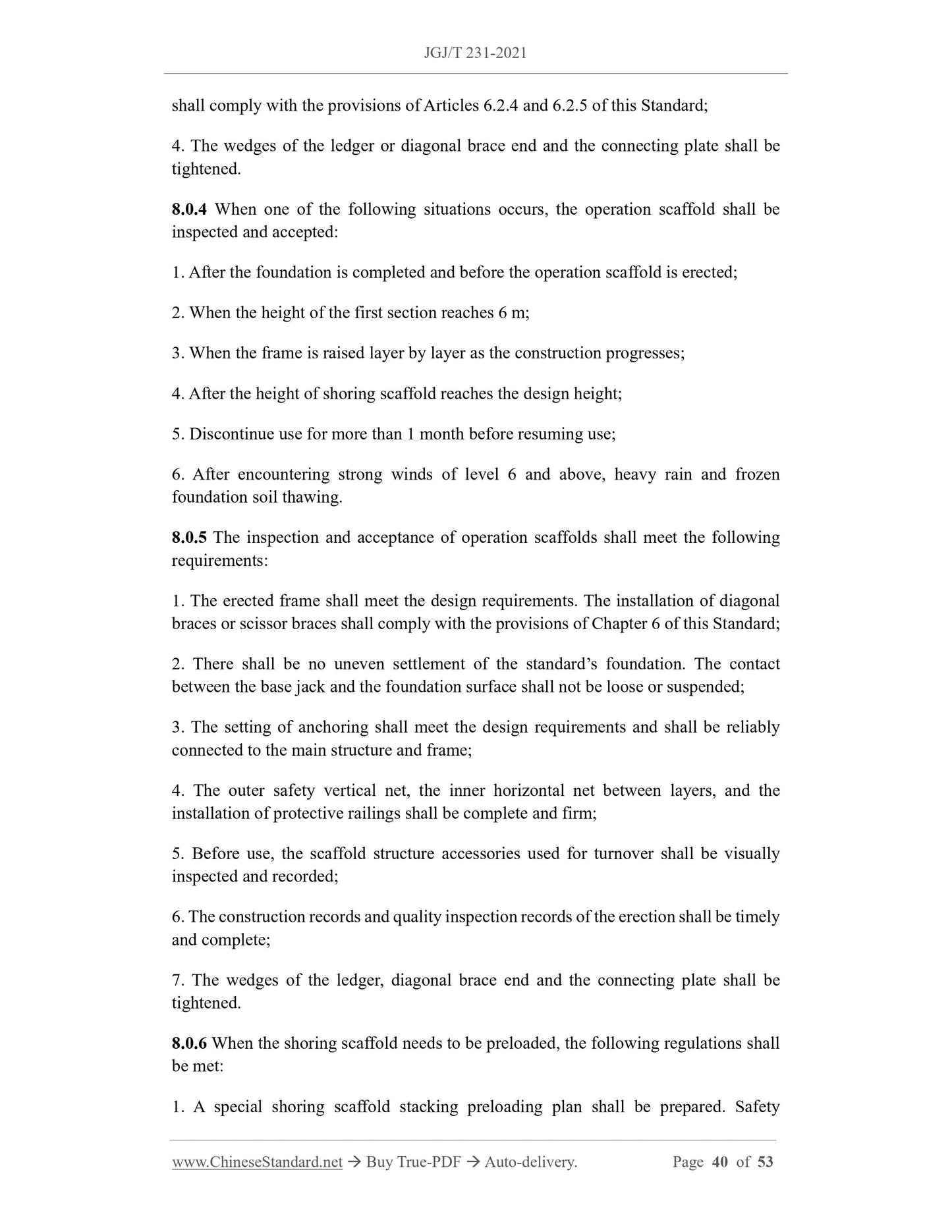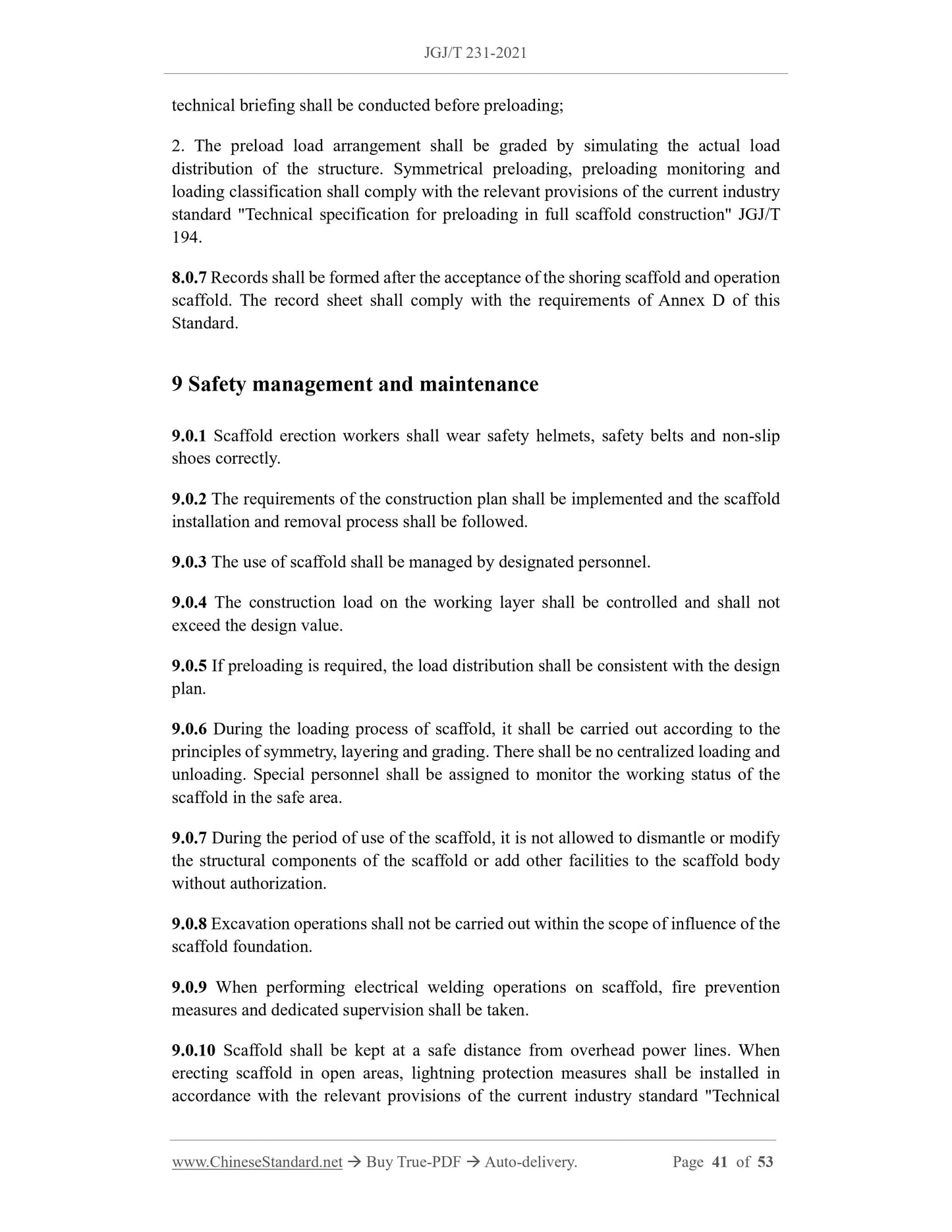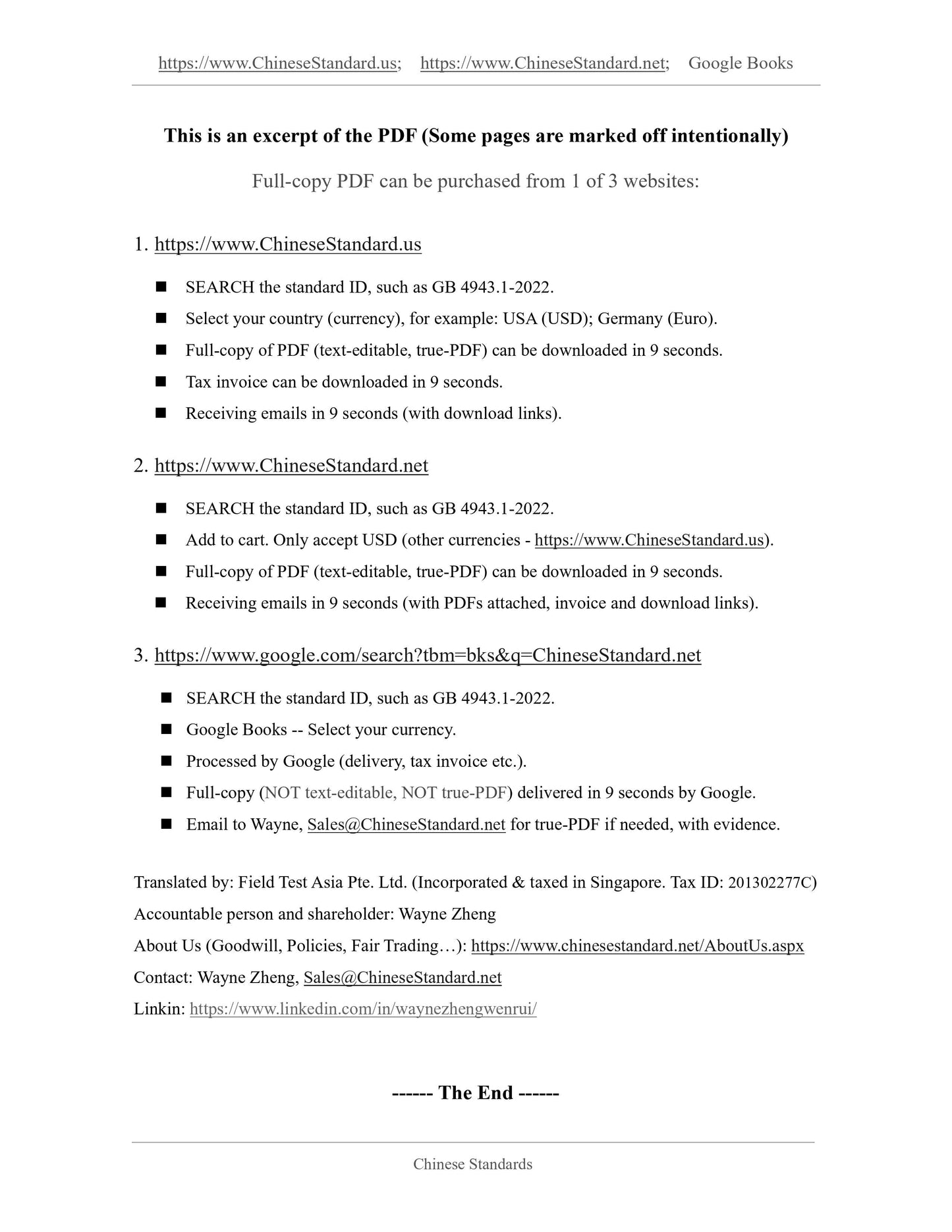1
/
of
12
www.ChineseStandard.us -- Field Test Asia Pte. Ltd.
JGJ/T 231-2021 English PDF (JGJ/T231-2021)
JGJ/T 231-2021 English PDF (JGJ/T231-2021)
Regular price
$1,405.00
Regular price
Sale price
$1,405.00
Unit price
/
per
Shipping calculated at checkout.
Couldn't load pickup availability
JGJ/T 231-2021: Technical standard for safety of disk lock steel tubular scaffold in construction
Delivery: 9 seconds. Download (and Email) true-PDF + Invoice.Get Quotation: Click JGJ/T 231-2021 (Self-service in 1-minute)
Newer / historical versions: JGJ/T 231-2021
Preview True-PDF
Scope
1.0.1 This Standard is formulated to ensure that the design, installation, dismantling,use and management of disk lock steel tubular scaffold are technologically advanced,
economically reasonable, safe and applicable.
1.0.2 This Standard applies to the design, installation, dismantling, use and management
of disk lock steel tubular scaffold in construction and municipal engineering.
1.0.3 In addition to complying with this Standard, the design, installation, dismantling,
use and management of disk lock steel tubular scaffold shall also comply with the
provisions of relevant national standards.
Basic Data
| Standard ID | JGJ/T 231-2021 (JGJ/T231-2021) |
| Description (Translated English) | Technical standard for safety of disk lock steel tubular scaffold in construction |
| Sector / Industry | Building and Construction Industry Standard (Recommended) |
| Classification of Chinese Standard | P09 |
| Word Count Estimation | 74,714 |
| Issuing agency(ies) | Ministry of Housing and Urban-Rural Development of the People's Republic of China |
Share
